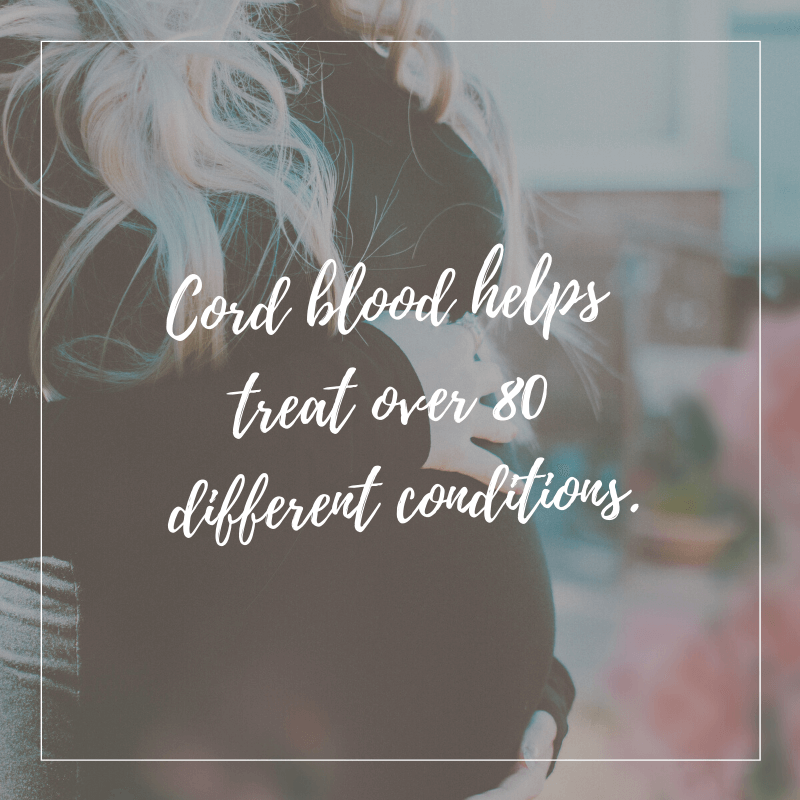Cord blood is rich in stem cells which can be used to treat diseases that harm the blood and immune systems, such as leukemia and certain cancers, sickle-cell anemia, and some metabolic disorders. Donate your cord blood and help those in need.
Start Today & Save A Life
How Donating Cord Blood Works
Donate cord blood and give a chance to save a life or lead to a life-saving medical discovery that changes thousands of lives in the future. The painless gift of donating a baby’s cord blood is done routinely.
Don’t let your baby’s cord blood be thrown away as medical waste. Minorities are underrepresented and often shorted on matches for treatment. Donate your cord blood and help minorities have an equal chance for care.
By donating your baby's cord blood you will be helping a family's child that might be facing one of the following medical conditions.
If you have a history of one of these conditions you might choose to store.
- Cancers
- Blood Disorders
- Metabolic Disorders
- Immunodeficiencies
- Bone Marrow Failure Syndromes
- Miscellaneous
- Acute Lymphoblastic Leukemia (ALL)
- Acute Myeloid Leukemia (AML)
- Burkitt’s Lymphoma
- Chronic Myeloid Leukemia (CML)
- Hodgkin’s Lymphoma Chromic Myelomonocytic Leukemia (CMML)
- Juvenile Myelomonocytic Leukemia (JMML)
- Lymphomatoid Granulomatosis
- Myelodysplastic Syndrome (MDS)
- Neuroblastoma
- Non-Hodgkin’s Lymphoma
- E-β+ Thalassemia
- E-βo Thalassemia
- HbSC Disease
- Sickle βo Thalassemia
- Sickle-Cell Anemia (Hemoglobin SS)
- α-Thalassemia Major (Hydrops Fetalis)
- β-Thalassemia Intermedia
- β-Thalassemia Major (Cooley’s Anemia)
- Adrenoleukodystrophy Gaucher’s Disease (Infantile)
- Alpha Mannosidosis
- Gunther Disease
- Hermansky-Pudlak Syndrome
- Hunter Syndrome
- Hurler Syndrome
- Hurler-Scheie Syndrome
- Krabbe Disease (Globoid Cell Leukodystrophy)
- Lesch-Nyhan Disease
- Maroteaux-Lamy Syndrome
- Metachromatic Leukodystrophy
- Mucolipidosis Type II, III
- Niemann Pick Syndrome, Type A and B
- Sandhoff Syndrome
- Sanfilippo Syndrome
- Tay-Sachs Disease
- Adenosine Deaminase Deficiency
- Ataxia Telangiectasia
- Chronic Granulomatous Disease
- DiGeorge Syndrome
- IKK Gamma Deficiency
- Immune Dysregulation Polyendocrineopathy
- Leukocyte Adhesion Deficiency
- Myelokathexis X-linked Immunodeficiency
- Omenn’s Syndrome
- Reticular Dysplasia
- Severe Combined Immunodeficiency
- Thymic Dysplasia
- Wiskott-Aldrich Syndrome
- X-Linked Agammaglobulinemia
- X-Linked Lymphoproliferative Disease
- X-Linked Mucolipidosis, Type II
- Amegakaryocytic Thrombocytopenia
- Congenital Dyserythropoietic Anemia
- Congenital Sideroblastic Anemia
- Cyclic Neutropenia
- Diamond-Blackfan Anemia
- Dyskeratosis Congenita
- Evan’s Syndrome
- Fanconi Anemia
- Glanzmann’s Disease
- Juvenile Dermatomyositis
- Kostmann’s Syndrome
- Red Cell Aplasia
- Severe Aplastic Anemia
- Shwachman Syndrome
- Thrombocytopenia with absent radius (TAR Syndrome Autoimmune Neutropenia – Severe)
- Hemophagocytic Lymphohistiocytosis
- Osteopetrosis
- Langerhans Cell Histiocytosis






